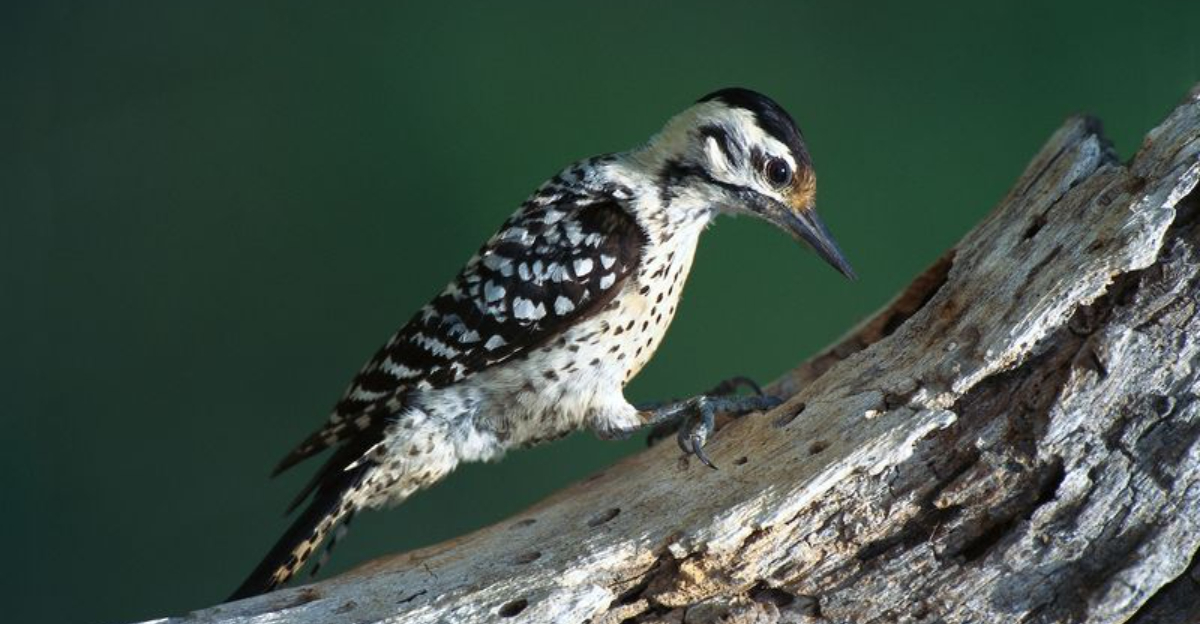Woodpeckers are fascinating and essential birds found in various regions across the globe. Known for their distinctive pecking behavior, these birds play a crucial role in their ecosystems by controlling insect populations and aiding in tree health.
Birders and nature enthusiasts alike are often captivated by their striking plumage and unique behaviors. In this article, we’ll explore types of woodpeckers that every birder should be familiar with, each with its own unique characteristics and habitat preferences.
1. Pileated Woodpecker
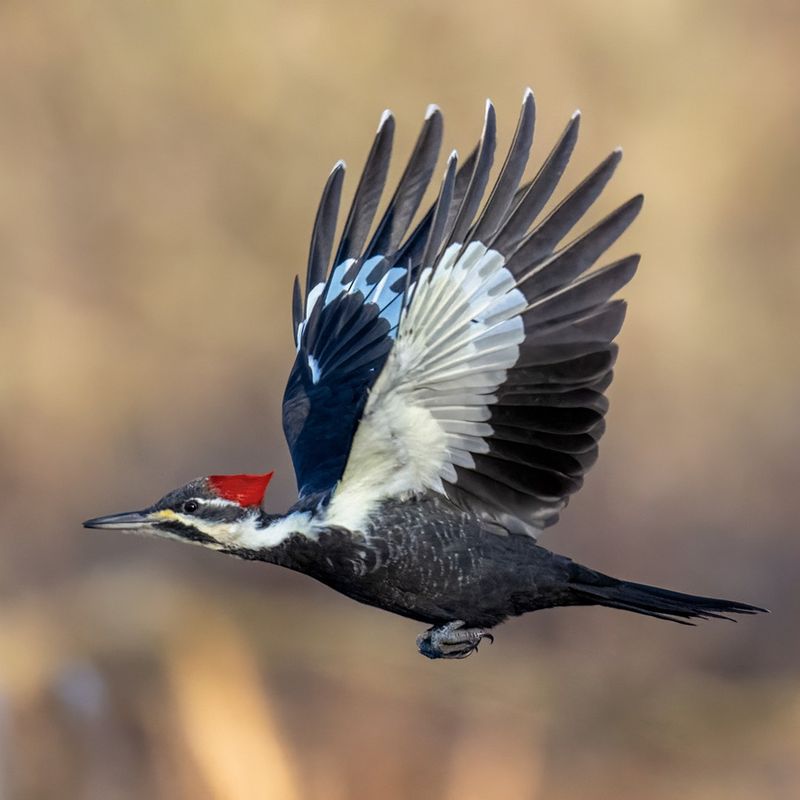
The largest of its kind in North America, this woodpecker is hard to miss. Its striking red crest and contrasting black and white plumage make it a true standout in the bird world.
Found primarily in mature forests, they often choose large, dead trees as their preferred drumming sites. These woodpeckers are known for their loud calls and impressive flight patterns.
They play a significant role in their ecosystem by excavating large cavities that other birds and mammals use as homes. When observing them, patience is key.
Often heard before seen, their distinctive drumming echoes through the forest. Birders may spot them high up in the trees, chiseling away at the bark in search of insects. They are a true delight for those passionate about avian wildlife.
2. Downy Woodpecker
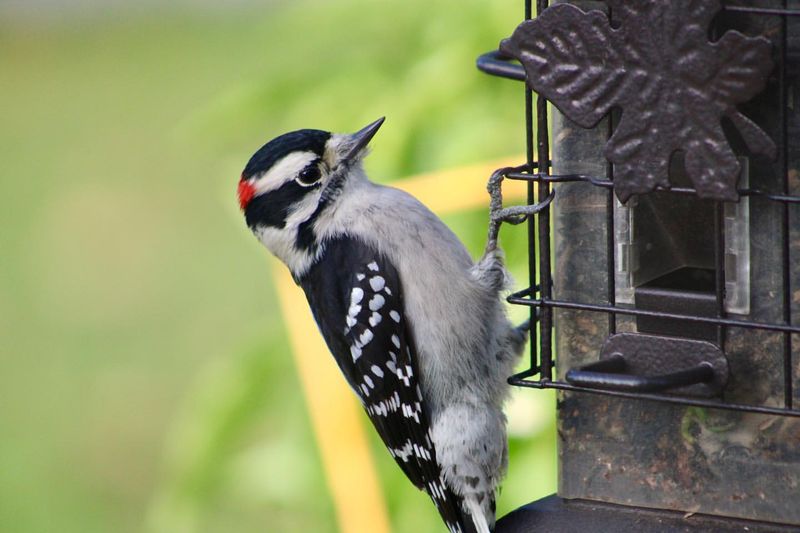
As the smallest woodpecker in North America, this bird is a common sight in backyard feeders and gardens. Despite its size, it is an active and agile hunter, often seen darting around trees and shrubs. Its black and white pattern, with a touch of red on the head, makes it easily recognizable.
These woodpeckers are known for their distinctive call and rapid drumming, which is often mistaken for the larger Hairy Woodpecker.
A favorite among birders, these woodpeckers are approachable and often allow close observation. They offer a unique opportunity to observe woodpecker behavior up close, teaching us about their foraging techniques and social dynamics. Their presence is a testament to a healthy ecosystem.
3. Red-Headed Woodpecker
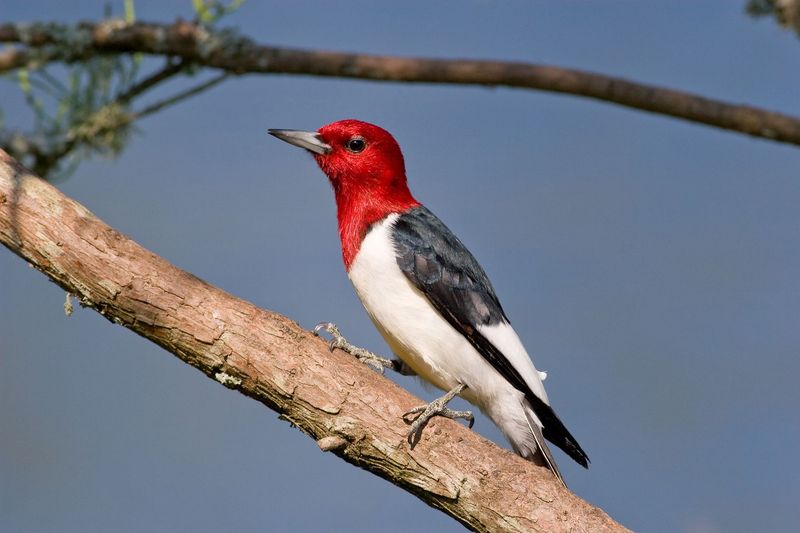
This striking bird is named for its completely red head, contrasting sharply with its snow-white body and black wings.
Unlike other woodpeckers, it exhibits a unique behavior of catching insects in flight. Found in open woodlands and savannas, these woodpeckers are often seen foraging for insects and fruits. Their loud, raspy calls make them easy to locate even from a distance.
Their striking appearance and unique behaviors make them a favorite among bird photographers. Birders delight in capturing their dynamic aerial displays and vibrant coloration. Protecting their habitats is crucial for maintaining their populations and ensuring future generations can enjoy these remarkable birds.
4. Northern Flicker
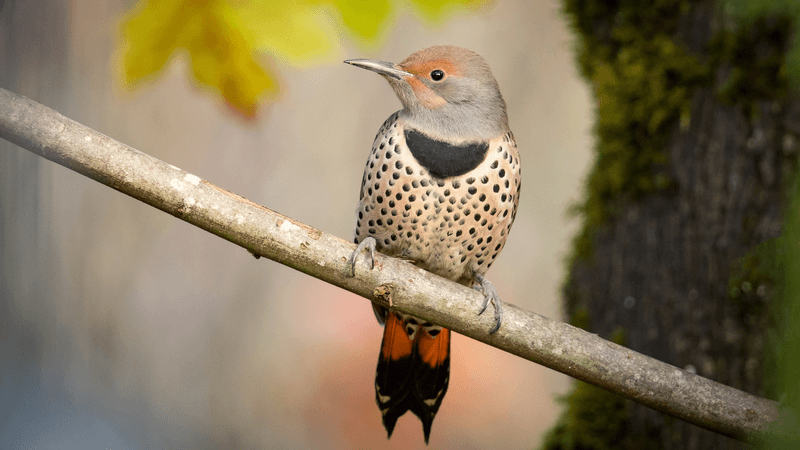
Unusually for a woodpecker, this bird is often found foraging on the ground. Its brown and spotted plumage is complemented by bright yellow or red underwings, depending on the region.
Their diet primarily consists of ants and beetles, which they skillfully extract using their long tongues. This woodpecker is easily recognized by its undulating flight and distinctive “wick-a-wick-a” call.
They often nest in tree cavities excavated by their powerful beaks. Birders enjoy observing their unique behaviors and listening to their melodic calls. Their adaptability to various environments makes them a widespread and cherished sight across North America.
5. Acorn Woodpecker
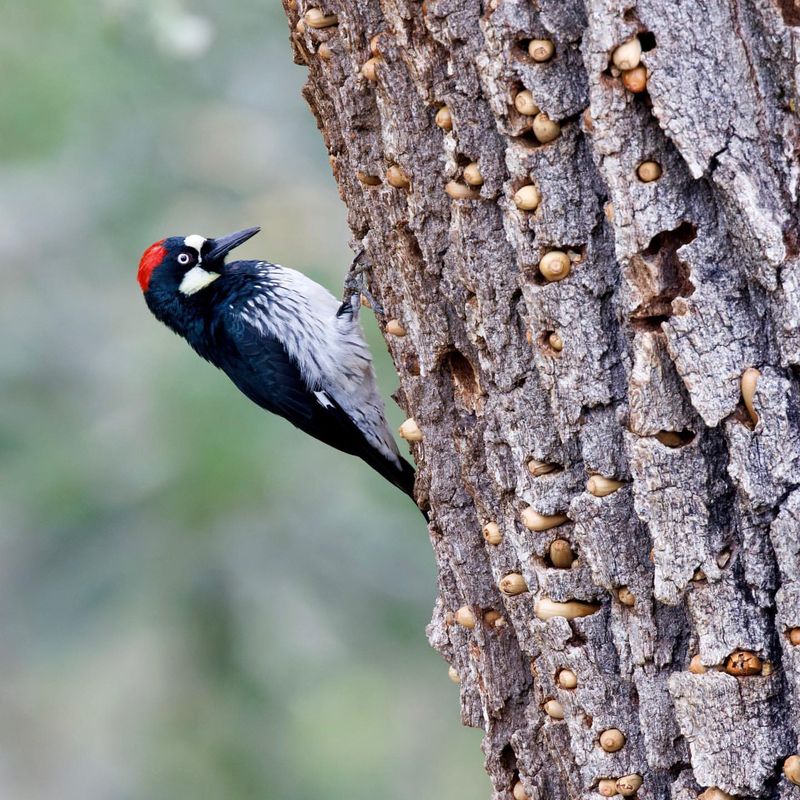
Known for its clown-like face, this bird is a frequent visitor to oak woodlands. It is famous for its habit of storing acorns in large granaries, often in the bark of trees.
These woodpeckers live in large, social groups, and their cooperative behavior is fascinating to observe. Their distinctive “waka-waka” call echoes through their habitats, often alerting birders to their presence. Their reliance on oak forests makes them an indicator species for these environments.
Birders delight in watching their acorn-storing antics and social interactions, providing insights into the complexity of avian societies. Protecting oak forests is essential for the survival of this charming and industrious bird.
6. Hairy Woodpecker
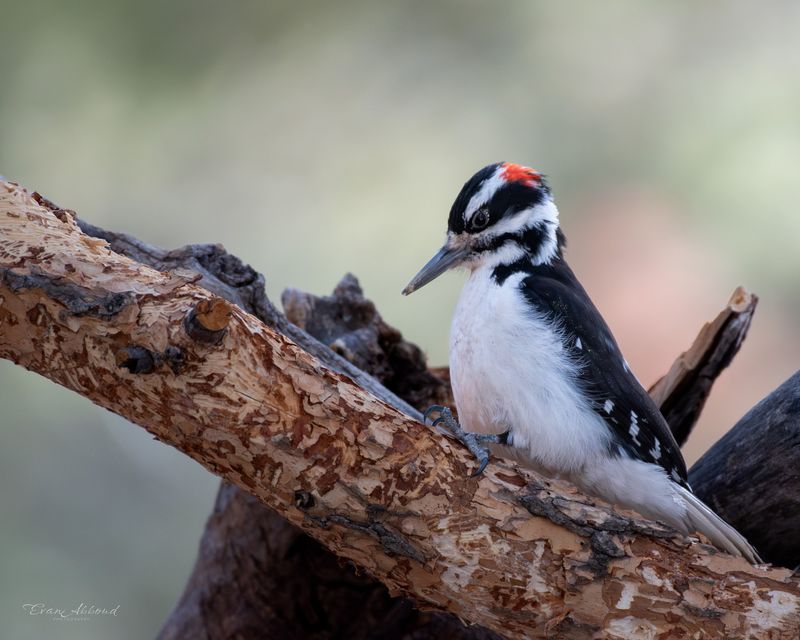
Slightly larger than its counterpart, the Downy Woodpecker, this bird is often seen in forests and wooded areas. Its longer bill and tail help distinguish it from the Downy, along with a slightly more robust build.
Their similar plumage often leads to confusion, but experienced birders know to look for size and bill length as distinguishing features.
Hairy Woodpeckers are efficient foragers, known to chip away at tree bark in search of insects. They contribute to their ecosystem by controlling pest populations and providing nesting sites in their abandoned cavities.
Observing them requires a keen eye, as their behavior can appear similar to the Downy at a glance. They offer valuable insights into the adaptability and survival strategies of woodpeckers.
7. Red-Bellied Woodpecker
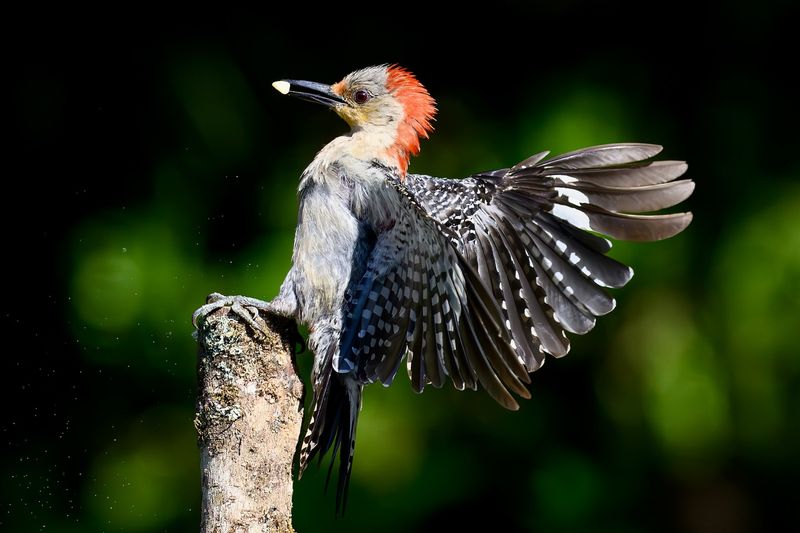
Despite its name, the red belly of this woodpecker is not always noticeable. Instead, it is often recognized by the bright red cap on its head and its zebra-striped back.
Common in eastern US forests, they are known for their loud calls and acrobatic foraging techniques. Their diet consists of insects, fruits, and seeds, making them frequent visitors to backyard feeders. Birders enjoy observing their dynamic behavior, from their impressive drumming to their intricate flight patterns.
These woodpeckers offer a glimpse into the adaptability and resilience of birdlife in suburban and forested areas alike.
8. Black-Backed Woodpecker
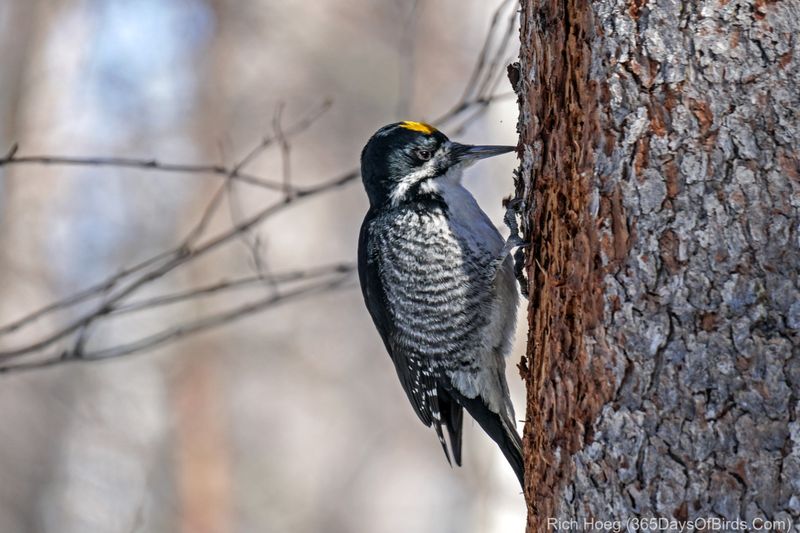
This elusive bird thrives in areas affected by forest fires. Its solid black back and yellow crown set it apart from most other woodpeckers.
They specialize in preying on beetle larvae found in charred wood, playing a crucial role in post-fire forest recovery.
Their presence often signals a healthy, regenerating ecosystem. Birders may find them challenging to spot due to their preference for remote, recently burnt areas.
Observing them offers a unique look at nature’s resilience and the roles specific birds play in ecological succession. Their subtle beauty and ecological importance make them a special find for dedicated birders.
9. Lewis’s Woodpecker
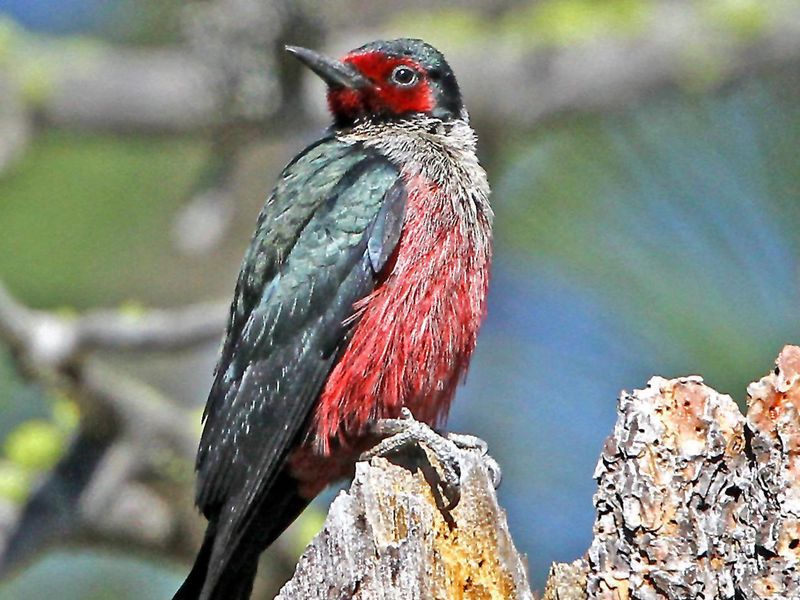
Named after explorer Meriwether Lewis, this woodpecker is unique in its dark greenish-black body and pinkish belly, standing out in open woodlands.
Unlike other woodpeckers, they are adept at catching insects in flight, resembling flycatchers more than their own kind.
This behavior, along with their quiet nature, makes them a fascinating species to observe. Birders appreciate their graceful flight and understated beauty.
They provide a distinct example of woodpecker diversity and adaptation. Protecting open woodland habitats is vital for maintaining their populations and allowing birders to continue enjoying their unique presence.
10. White-Headed Woodpecker
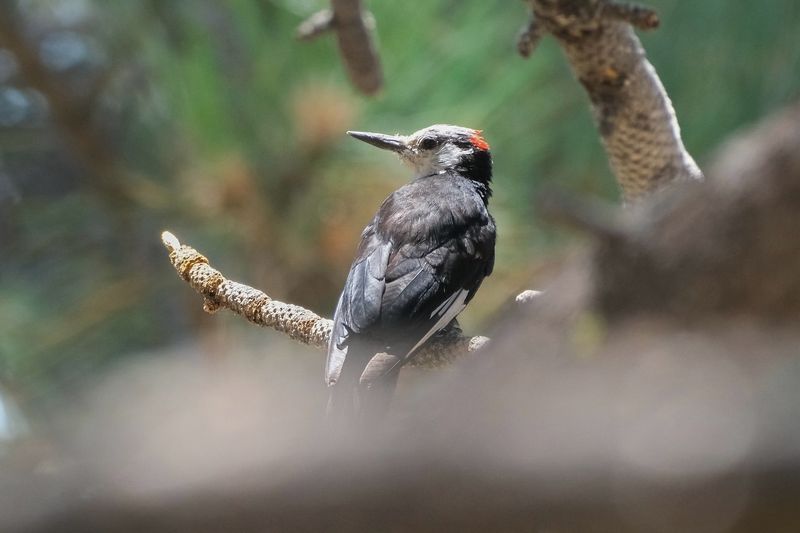
Characterized by its striking white head, this woodpecker is a resident of coniferous forests in western North America.
Its contrasting black body adds to its distinctive appearance. They feed primarily on insects and seeds, often seen climbing pine trees in search of food. Their quiet demeanor makes them a more challenging bird to spot in their dense forest habitats.
Birders value the opportunity to observe these birds, as their presence indicates healthy, mature coniferous forests. They offer insights into the specialized adaptations of woodpeckers to different environments. Preserving their habitats ensures the survival of this unique species.
11. Gila Woodpecker
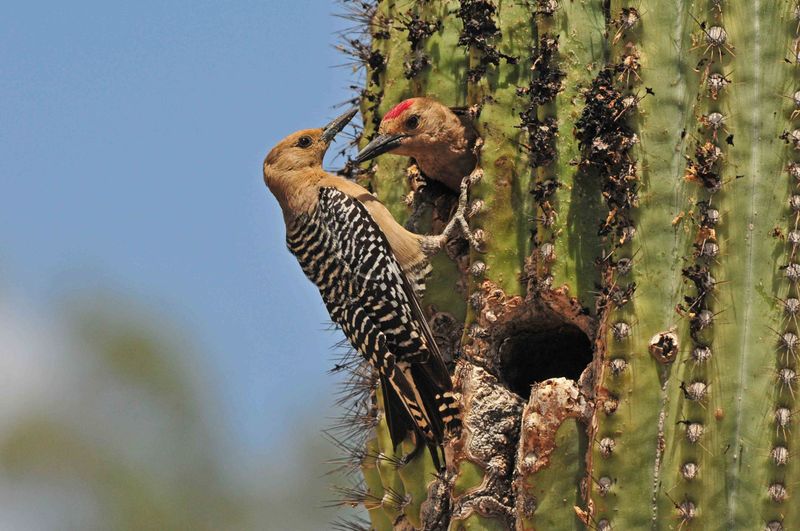
Inhabiting the deserts of the southwestern United States and Mexico, this woodpecker is well-adapted to arid environments. Its tan body and black and white barred wings are distinctive.
They are known for their role in the desert ecosystem, particularly in saguaro cacti, where they create nesting cavities used by other species.
Their distinctive calls echo through the desert landscape. Birders delight in their adaptability and unique nesting behaviors. Observing them provides a window into the harsh yet vibrant desert ecosystems. Protecting these habitats is crucial for the conservation of the diverse species that depend on them.
12. Yellow-Bellied Sapsucker
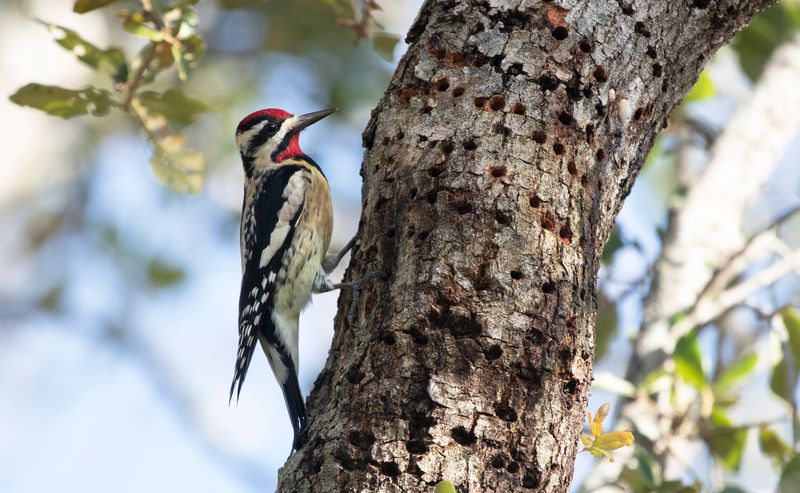
This migratory woodpecker is known for its distinctive sap wells, which it drills into tree bark to feed on sap and insects.
Its yellow belly and red crown make it easy to identify. Found in forests across North America, they play a role in their ecosystems by providing food sources for other animals through their sap wells. Their gentle tapping and rhythmic drumming are familiar sounds in their habitats.
Birders appreciate their unique feeding behavior and the opportunity to observe them during their migrations. Protecting their migratory routes and forest habitats is vital for their survival and the well-being of the ecosystems they support.
13. Nuttall’s Woodpecker
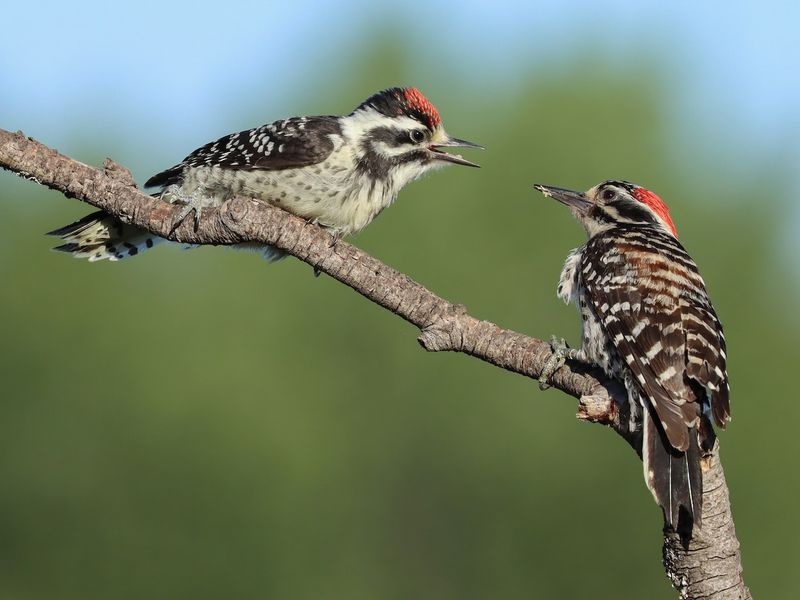
Endemic to California, this woodpecker is a specialist of oak woodlands. Its black and white barred back and white-spotted face are distinctive features.
They feed primarily on insects, often seen flitting through the branches of oaks. Their rapid drumming and lively calls make them easy to locate in their preferred habitats. Birders treasure sightings of this woodpecker, as it symbolizes the rich biodiversity of California’s oak ecosystems.
Observing them offers insights into the complex interactions within these environments and the importance of preserving these unique landscapes.
14. Great Spotted Woodpecker
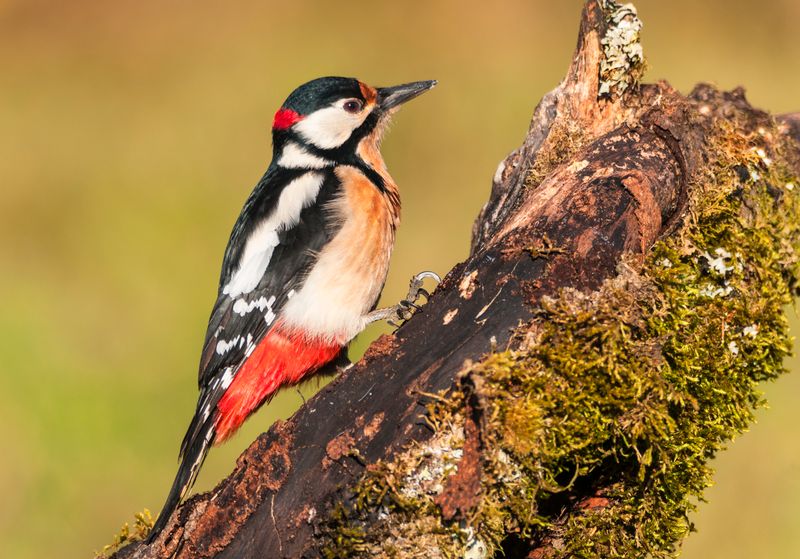
This common European woodpecker is recognized by its black and white plumage and bright red underbelly. It is often found in deciduous and mixed woodlands.
Their drumming is a familiar sound in European forests, and they play a crucial role in controlling tree pests. Their adaptable nature allows them to thrive in both rural and urban areas. Birders enjoy their dynamic behaviors, from their vigorous drumming to their agile movements.
Observing them offers a glimpse into the life of a versatile and resilient woodpecker species, highlighting the importance of maintaining healthy forest ecosystems.
15. Ladder-Backed Woodpecker
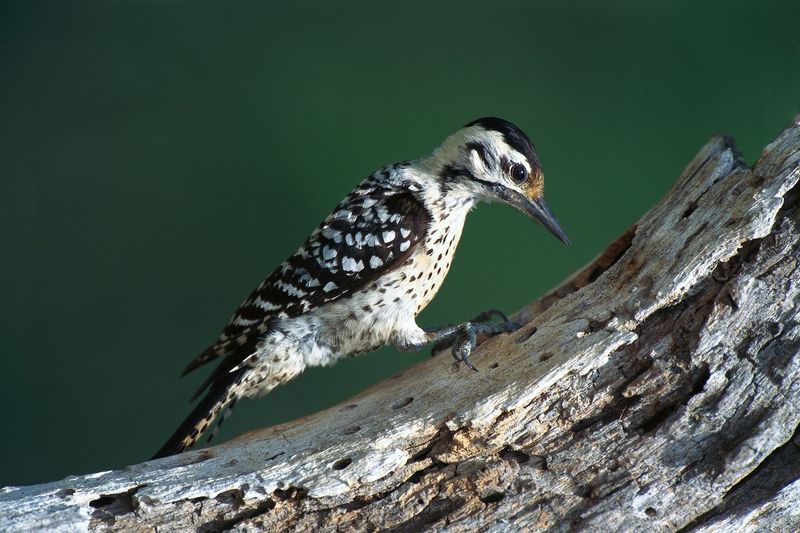
This small woodpecker is found in the arid regions of the southwestern United States and Mexico. Its distinctive black and white ladder-like pattern on the back is unmistakable.
They are often seen in desert scrub and mesquite habitats, where they forage for insects and seeds. Their rapid drumming and sharp calls are characteristic sounds of their environment.
Birders appreciate their ability to thrive in harsh conditions, offering a fascinating study of adaptation and survival. Observing them in their natural habitats provides insights into the ecological dynamics of desert ecosystems. Protecting these environments ensures the continued existence of this resilient species.

